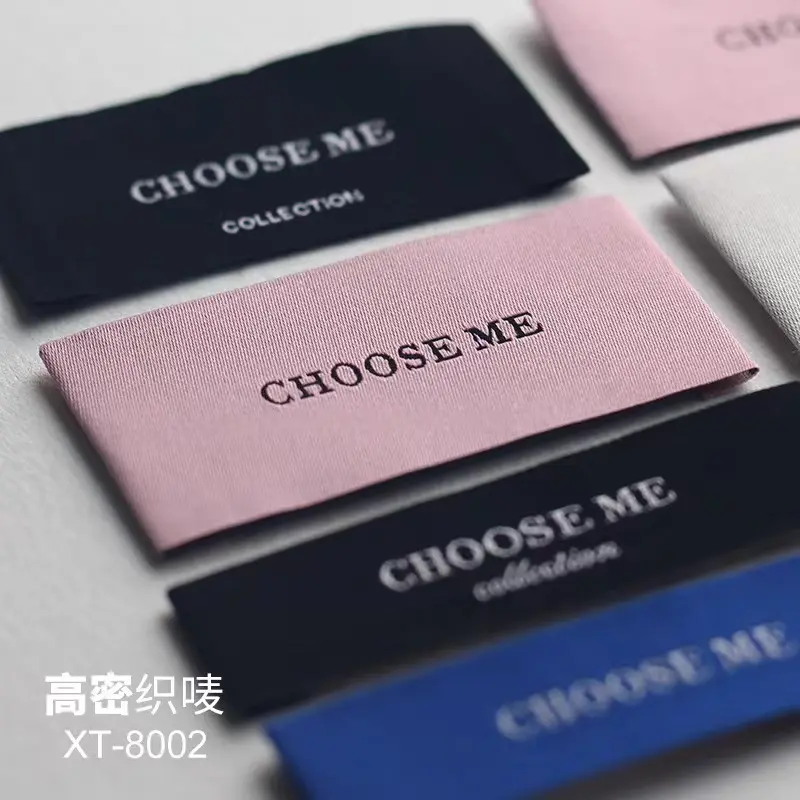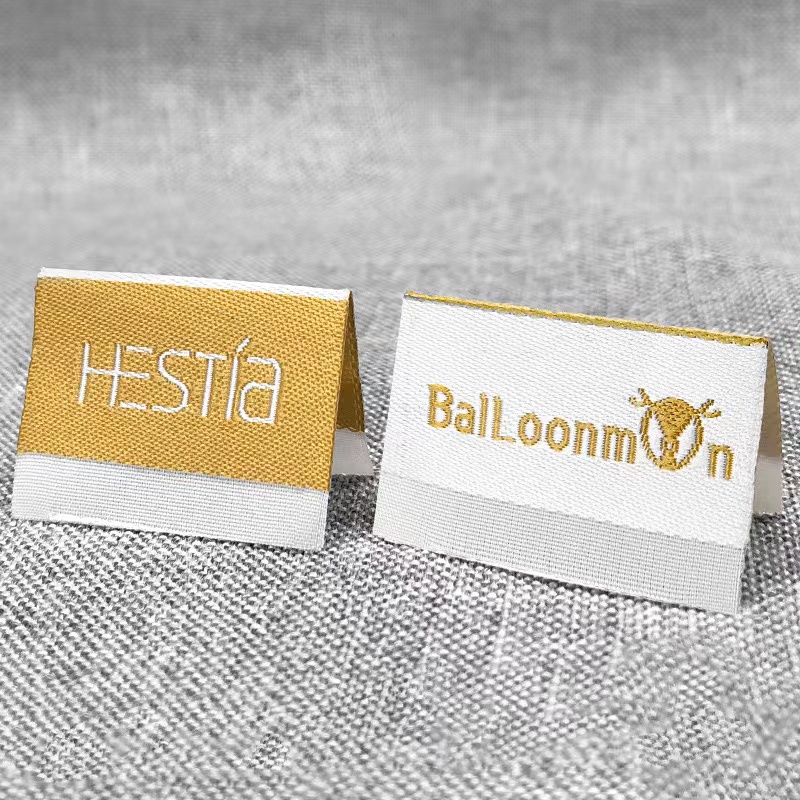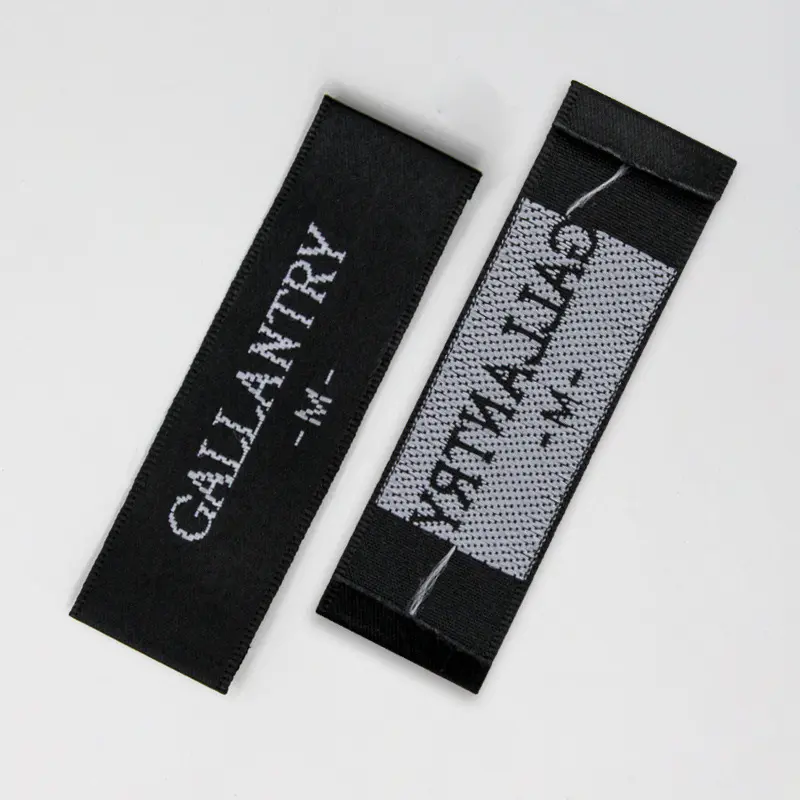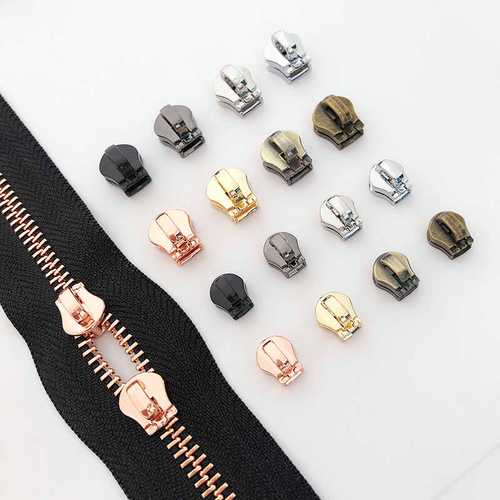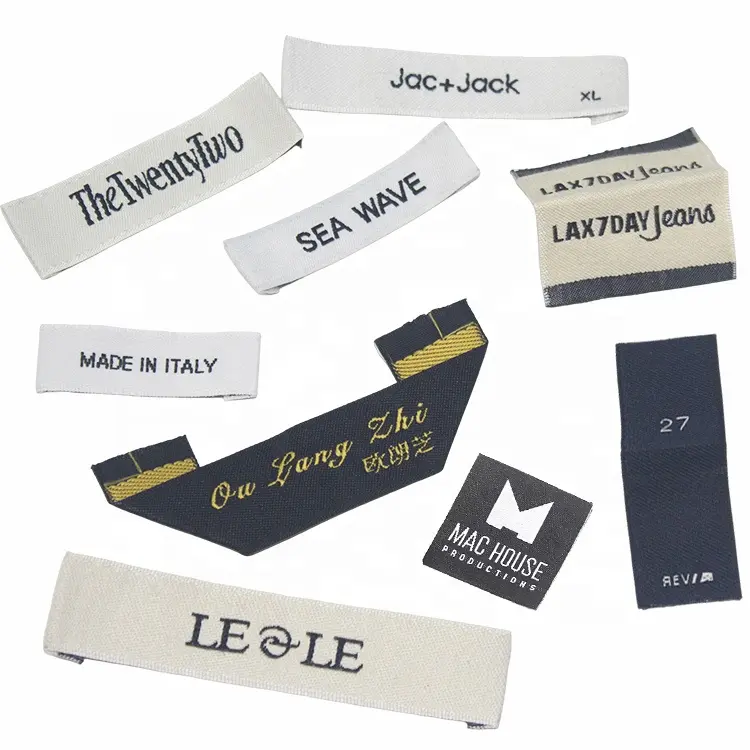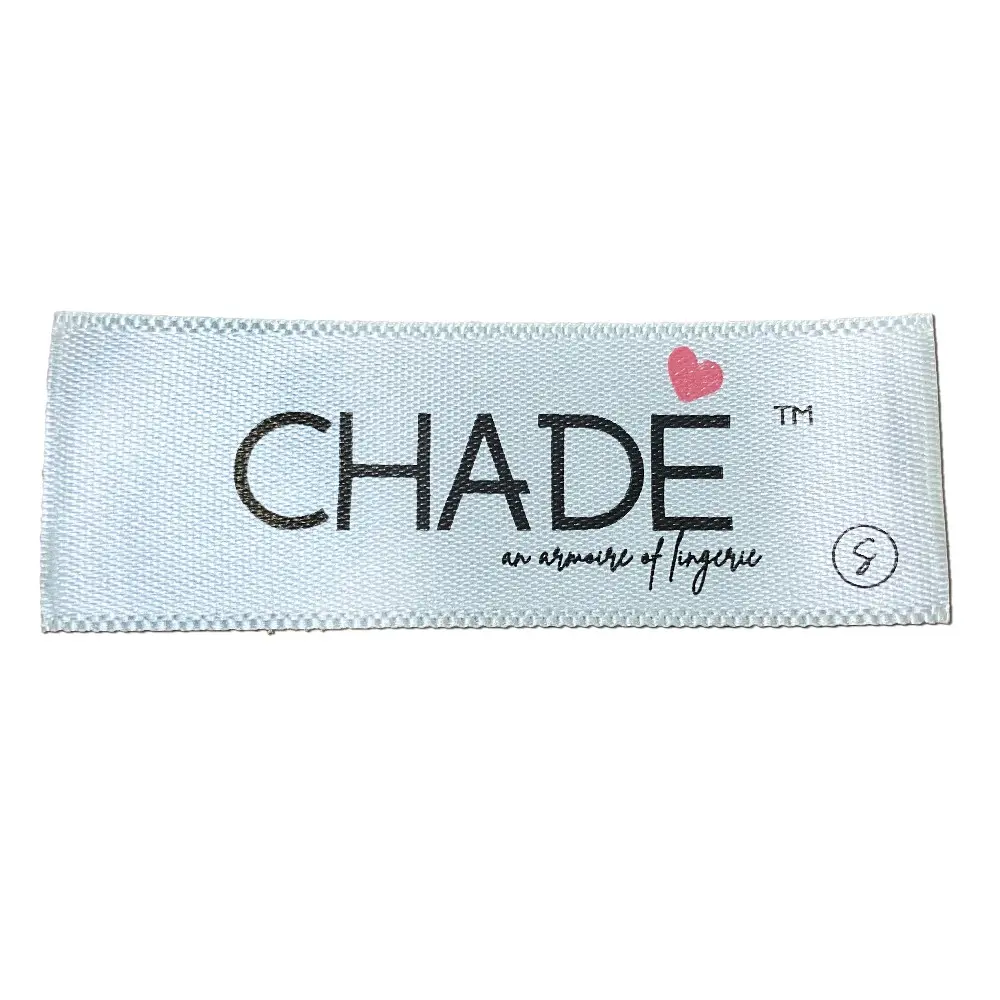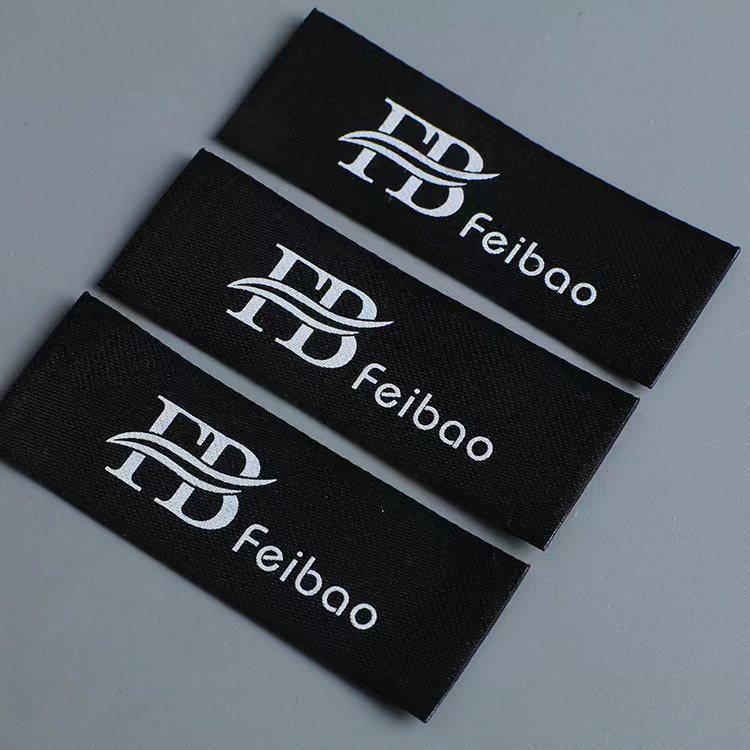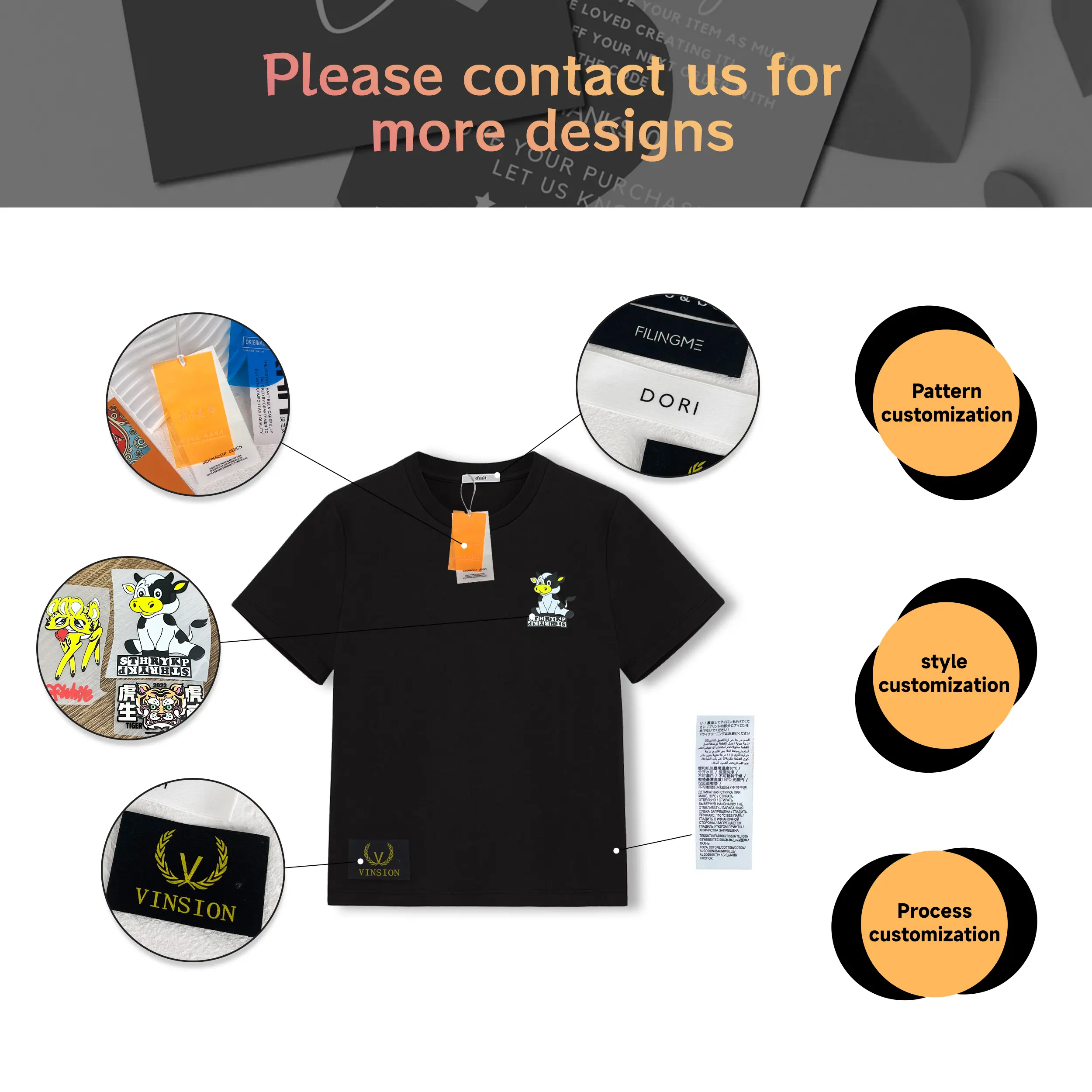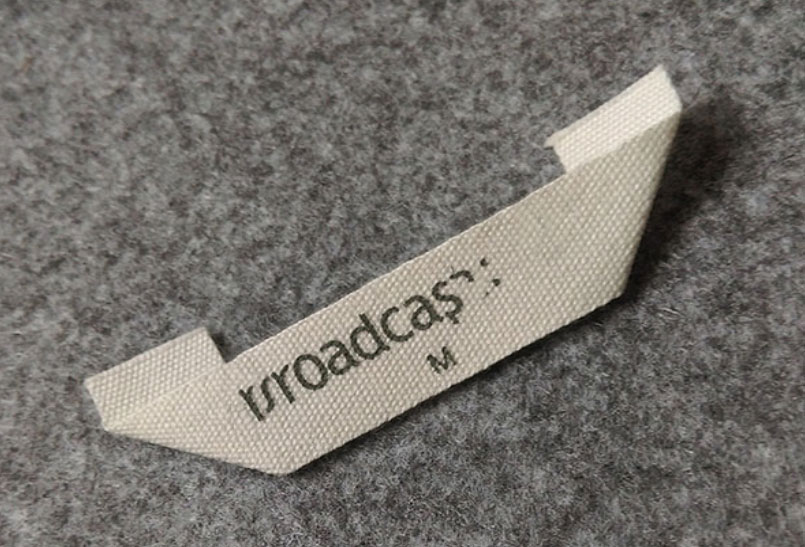What are the main techniques for woven labels?
Date Time: November 18, 2023
Reading volume: 1508
Author: LIJIE
The craftsmanship of woven labels can vary in the market. In clothing and footwear, you can often see folded, cut-folded, and hanging-folded labels, which can be processed differently according to customer requirements. The post-processing of woven labels can affect their quality and comfort. So let's find out the main craftsmanship of woven labels:
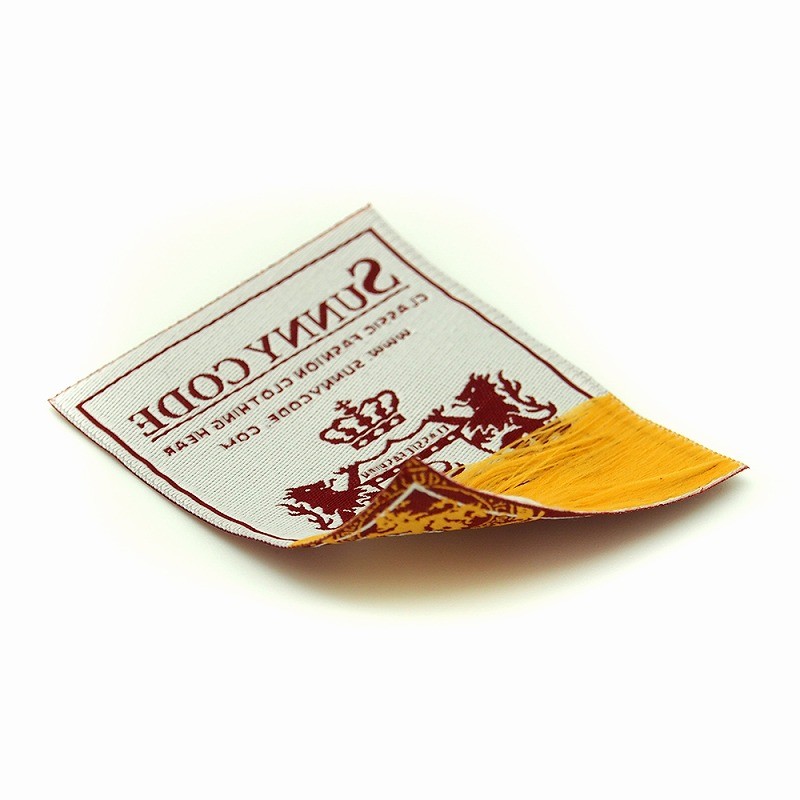
1. Woven Edge Labels: When the required label is woven in one piece according to the width requirement, it is called a woven edge label. This technique avoids many disadvantages of cutting edges but has lower output. There are flat and satin variations, known for their soft and firm texture. They are suitable for high-end fashion items such as suits and require meticulous quality, commonly used by Japanese manufacturers. The machines used for woven edge labels are also of high quality, mainly produced in Japan. Woven edge labels are generally made with satin finish, but it is difficult to express the color of the satin base. Therefore, techniques like hot stamping or dyeing are commonly used to address this issue. Woven edge machines include wooden shuttle machines, which usually have no more than four colors, and crochet machines, which can produce various quality finishes, even incorporating transparent polyester yarns, known as fish silk crochet machines.
The cost composition of woven labels includes width, total length of each color, craftsmanship, and the type of yarn used. The JB series yarn is commonly used internationally.
2. Cut-edge Labels: As the name suggests, these labels are woven on specialized high-speed machines as a continuous roll and then cut into strips according to the width of the label. Due to the heat-melting properties of polyester, the yarns stick together when cut, preventing fraying. However, this can have a certain impact on the appearance and feel of the label. Higher-quality machines and ultrasonic cutting methods produce better results compared to regular electric hot knives. Strip-packaged labels can be directly sent to clothing factories for processing. If strict requirements are needed, additional cutting and folding processes are necessary. A single computer jacquard component has a maximum width of 20cm, but by adding more jacquard components, wider labels can be woven, allowing for larger shapes to be processed.
Original reprint note: https://clothinglabelscustom.com/car-multimedia-player-android-bluetooth.html

























